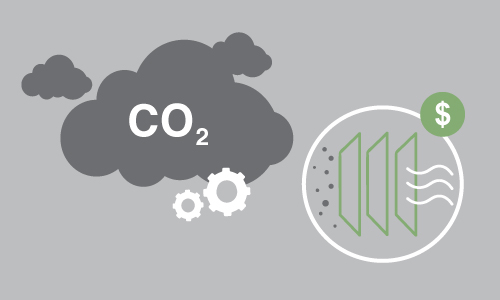Today, private companies and entire countries are obsessed with progress and technology. Industrialization and the expansion of urban areas are often regarded as logical advancements, but they also generate a myriad of secondary effects that may potentially outweigh their benefits.
Global pollution has been in the limelight for decades at this point, and it has recently hit critical stages. The World Health Organization (WHO) estimates that more than 12.5 million people die from environmental hazards every year, which include:
Water Pollution
As the name indicates, this type of pollution affects available water sources. Contaminants may come from industrial facilities, sewage systems, or underground operations like mines.
Land Pollution
The contamination of a surface with solid or liquid waste is known as land pollution. This type of pollution includes contaminants that come from major urban areas, agricultural operations, and construction sites.
Air Pollution
Air pollution is arguably the most common and perhaps the deadliest type of mass-scale contamination. Volatile organic compounds (VOCs), particulate matter, and hazardous air pollutants (HAPs) are just some of the airborne contaminants that may have a negative effect on our health and the environment as a whole.
According to the WHO, airborne contamination has become the fourth leading cause of global premature deaths, with a total of 5.5 million lives lost due to air pollution in 2013 alone.
How Much Does Pollution Costs at a Global Scale?
Calculating the exact cost of pollution is tricky because it directly impacts a huge number of different resources and social segments. However, recent estimates suggest that the actual dollar cost is as much as 5.7 trillion dollars, once you factor all pollution-related deaths, diseases, and other devastating effects.
Health Drawbacks
The main reason why pollution is regarded as a significant threat is the negative effects it has on the human health. Both short and long-term exposure to pollution can result in:
- Respiratory complications
- Increased chances of lung disease
- Hospitalization due to cardiac conditions
- Higher chances of developing different forms of cancer
- Fatigue, wheezing, and dry throat
- Weakened athletic performance
- Aggravated asthma
- Acute and recurring conditions
- Premature death
Physical symptoms may not surface right away, and their severity may vary from one person to another, as well as the degree of exposure to the contaminant.
Pollution’s Impact on the Environment
Keep in mind that pollution as we know it is a result of human activities. This means that it has no place in the natural cycle, so the introduction of these pollutants into the environment can have detrimental effects on plants, animals, and the ecosystem in general.
Like with human health, pollution can have a massive effect on the environment that can range from mild drawbacks to severe imbalances. The effects of pollution on the environment include, but are not limited to:
- Widespread of invasive species due to a change in climate
- The concentration of toxic compounds in the ground, water sources, or atmosphere
- Increased emission of carbon dioxide, which decreases the pH of the world’s oceans
- The creation of smog
- Acidic rain
- Increased generation of greenhouse gases and global warming
The Benefits of Clean Air
While all types of pollution are extremely dangerous, air contaminants represent about 66% of the total deaths alluded to mass contamination. Besides the fact that contaminants move faster when airborne, it’s very easy to get exposed to air pollution.
Simply breathing contaminated air can result in severe health complications, so aiming to reduce the amount of airborne pollution is critical for human beings in general. Breathing in clean air has many benefits, including:
- Cleaner lungs
- Decreased asthma and allergies symptoms
- Improved skin appearance
- Helps digestion
- Psychological and emotional stabilizer
- Better mood and normalized sleep patterns
- Reduce chances of lung, heart, and arterial diseases
Besides the health conditions listed above, clean air also has a positive effect on the animal and plant life around the planet. Moreover, studies have demonstrated that highly polluted areas of the world have a social disadvantage. This means that solving the pollution problem may also help address social issues, potentially reducing crime and poverty rates across the board.
Learn More About VOC Abatement Systems
Want to learn more about controlling pollution emissions in your factory? Get in touch with The CMM Group and our team of professional engineers will be glad to help you develop a sustainable solution, allowing you to destroy VOCs and other pollutants effectively.
Get in touch with us by giving us a call or by filling out our online contact form today!




